A guide to leveraging AI for success in Digital PR
Understanding ChatGPT and AI
Digital marketing is changing and developing all the time, and now AI has rapidly emerged as an indispensable tool in our industry. And it’s definitely not just a trend, It’s revolutionised data-driven insights, ad optimisation, social media management and much more.
Specifically, AI plays a pivotal role in digital PR, offering us tools for sentiment analysis, content creation, media monitoring, and influencer identification. As AI continues to develop, it’s now integrated into a digital marketers’ core toolkit, shifting how we drive results.
What is AI and ChatGPT?
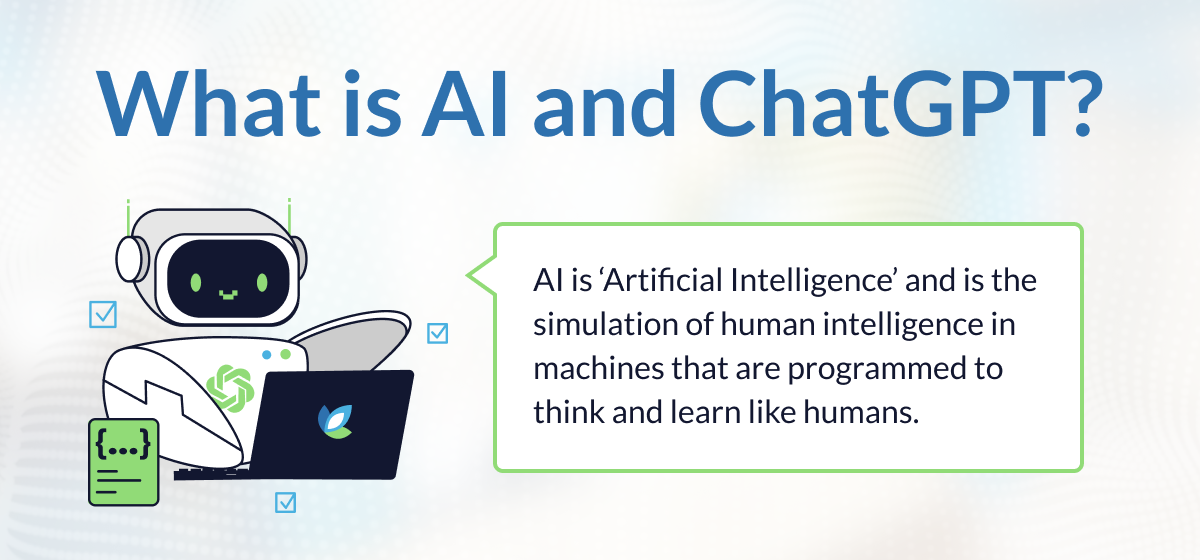
AI enables computers to perform tasks that typically require human intelligence, and can be applied to a huge range of tasks. This includes marketing tasks such as, data exploration, customer profiling, and writing social media posts.
One of the most used implementations of AI is ChatGPT, a free tool for signed-up users. It can understand and generate human-like text responses based on the input it receives. Users interact with ChatGPT by providing text prompts, and it responds with contextually relevant and coherent text replies generated in real-time.
In this guide, we’ll look at how you can leverage AI for success in your digital PR role, including:
How to craft the best prompts
AI apps that help your efficiency as a PR
How to use Chat GPT for data analysis in your PR role
How to use AI for creative ideation
Ways you can use AI to create newsworthy PR campaigns.
Since this is a relatively new concept, we’ll also address the important topic of ethics, privacy and security with AI in Digital PR.
How to craft the best prompts for ChatGPT
ChatGPT prompts are text or instructions that you input, guiding the AI response to generate a specific response that you want. In Digital PR, we can use ChatGPT to help with headlines for press releases, survey questions, ice breakers for creative sessions, and much more.
Crafting effective prompts is essential to ensure you get the most out of ChatGPT's capabilities in your marketing tasks.
Clear and concise structure
Ensure your prompts are clear, concise, and specific. Avoid vague questions and provide context where you can.
Example of a vague prompt: "How can I improve my digital PR?"
Improved prompt: "I need to secure more links in automotive publications for my car insurance client. What digital PR strategies can I employ to secure more links in relevant places for this industry?"
Avoid very short prompts
If your prompt is too short, ChatGPT might not fully understand the context or provide a comprehensive answer. Ideally, use multiple sentences in your prompts to give ChatGPT more information to work with.
Example short prompt: "New app headlines"
Improved prompt: "We are launching a new fitness app, 'FitLife,' designed to transform the way people approach their fitness journey. FitLife offers personalised workouts, nutrition tracking, and expert coaching, all in one app. Provide captivating headline options for a press release to announce this groundbreaking fitness app launch event."
Use colloquial language in your prompt
ChatGPT is designed to understand and respond to natural language prompts. Frame your questions as if you were talking to a human, which encourages more human-like responses from ChatGPT.
Example robotic prompt: "List digital PR strategies"
Improved prompt: “Our company is preparing to launch a new line of eco-friendly activewear targeted at health-conscious individuals. We want effective digital PR strategies to increase brand awareness and secure backlinks. Could you provide a list of innovative digital PR strategies that can help us reach our target audience, generate media coverage, and gain quality backlinks to support our product launch?"
Experiment with different approaches
Don't be afraid to try different variations of prompts to see what gives you the answer closest to what you were looking for. Experiment with altering the phrasing, adding keywords, or changing the level of specificity to find the best approach.
For example:
Version 1: "Tell me about digital PR trends in 2024."
Version 2: "What emerging digital PR trends should we be prepared for in 2024?"
Include background information
Provide relevant background information in your prompts to give more context. This helps ensure more accurate responses, and closest to what you were looking for.
Example prompt without context: "Digital PR fashion campaign ideas"
Improved prompt: "Our luxury fashion brand is launching a new collection of sustainable and ethically sourced clothing. We are looking to create a powerful digital PR campaign that highlights our brand values, attracts eco-conscious consumers, and secures media coverage in fashion publications.
Please brainstorm creative and impactful digital PR campaign ideas, such as influencer collaborations, behind-the-scenes content, and partnerships with environmental organisations, that will position our brand as a leading advocate for sustainable fashion and captivate our target audience."
Refine and iterate
Sometimes ChatGPT doesn’t quite get it right, but don’t give up. You can ask it again to improve and change its initial response. Creating an effective prompt to get the exact response you need, might require some iteration and refining. For example:
Example prompt to refine a response: “Could you simplify your explanation for a non-technical audience?”
Example prompt to refine a response: “Could you use more informal language to write this?”
Example prompt to refine a response: “Can you provide more examples to support your previous answer?”
Example prompt to refine a response: “Can I have more options?”
Example prompt to refine a response: Could you rewrite this with over 70 as the target audience?”
Include examples
ChatGPT can write in a specific style, and the best way to achieve a result most similar to what you’re looking for is to include a description of tone and style, and also an example.
Example prompt without an example: “Write a social media post about our ocean clean up event”
Improved prompt: "We are organising a beach clean-up event on Whitby beach. The event focuses on raising awareness about ocean conservation and the importance of keeping our beaches clean.
We need a social media post that captures the excitement and community spirit of the event. Our usual tone on social media is upbeat and encouraging, using positive language like 'Let's come together and make a difference for our oceans!”
Crafting the best prompts is a valuable skill that can significantly enhance your ability to leverage AI in your marketing efforts.
8 AI apps that help to improve your efficiency as a PR
AI can not only be used creatively, but it can also be a very efficient time-saving tool for busy PRs and our day-to-day tasks.
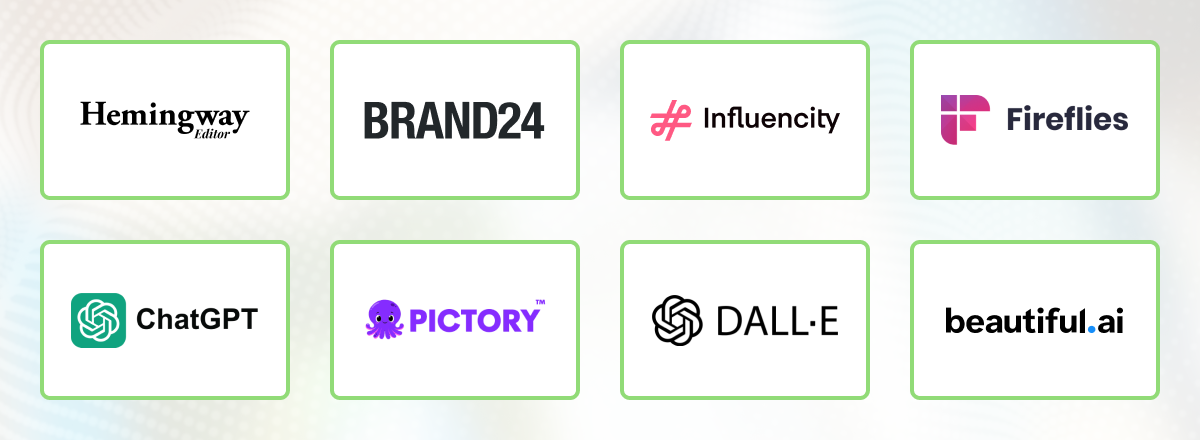
Hemingway app
Even if you want human-written copywriting, you can still use AI to efficiently edit the text for clarity. Hemingway app highlights lengthy, complex sentences and common errors. For maximum readability, it’ll also show excessive adverb usage, where there’s a simpler alternative, and sentences that are very hard to read.
However, bear in mind, this won’t work for a piece of copy where a very, unique personal style and tone, outweighs raw readability.
Brand 24
Brand24 is a quick and effective way to measure your PR efforts, and gives you access to your brand mentions across social media, news, blogs, videos, forums, podcasts, reviews, and more.
You can create reports to measure your PR coverage, and gain intelligent analytics, to make data-driven decisions that can help to improve your PR strategy.
You can also use advanced sentiment analysis to segment positive, negative, or neutral mentions.
Influencity
We know that finding the right influencers to PR your products isn’t as simple as choosing the one with the most followers or coolest pictures. AI powered influence marketing tools such as Influencity, help you to discover the influencers best suited to your brand and PR campaign needs. It saves so much time, doing the manual work for you, helping you to find relevant influencers, track their performance and measure the impact of your partnership with them.
Fireflies
If you are interviewing someone for your PR campaign, such as, a case study subject, spokesperson at your company, influencer, CEO etc, you can use Fireflies to easily transcribe the interview, saving you so much time listening back.
Chat GPT
The headline of your press release is arguably the most vital aspect, Chat GPT can help you come up with the perfect, effective headline. For example, input your press release, so the AI tool has as much context as possible, and ask it to generate 10 headline options for a tabloid newspaper.
Pictory
A video can enhance your PR campaign, amplifying your press release copy and helping you sell it into journalists. Pictory makes campaign videos from scratch, for example, you can provide your article URL or a video script and it will speedily transform it into engaging videos.
Dall-E
With Dall-E, you can create almost any image you need to. If you’re in a campaign brainstorm and you would like to visualise your idea, you can quickly get a mockup of any idea right there and then in the ideation session, without needing a designer.
You could show mock ups of a new potential product, but absolutely anything can be created for example, “a 3D render of a cute tropical fish in an aquarium on a dark blue background”:
Beautiful.ai
If you need to present your strategy to stakeholders or managers, Beautiful.ai can be used to create stunning slide decks, and you don’t need to spend long or be design savvy, “just add content and your slides adapt like magic”. When you start, it also unlocks millions of images and icons that reflect your brand guidelines, so all your presentations will consistently be on brand, without having to mess around with formatting.
By incorporating AI tools into PR strategies, you can save time, gain valuable insights, and deliver more personalised and impactful campaigns.
How to use Chat GPT for data analysis in your PR role
The capabilities of Chat GPT don’t quite stretch to full data analysis, however, there are useful ways we can use this free tool for data in PR roles. While it can’t complete statistical analysis from datasets or generate graphs for your campaign content, it can be useful for exploring your data.
It’s best to start by giving ChatGPT some brief context about the data and the analysis you're interested in for your PR campaign. For example, you can mention the type of data you have (survey responses, crime data, social media mentions), the time period covered, and any specific questions or goals you have in mind for your campaign.
Here’s a few ways you can utilise Chat GPT for effective data analysis:
Recommending the best ways to visualise your data
Data visualisation is key in a data campaign, highlighting your key press hooks. While Chat GPT can’t actually create the charts, it can be used to generate ideas for engaging graphs and the best ways to represent your data so it resonates with your audience.
Descriptive insights
Creating a data campaign relies on you pulling out key insights from your dataset to form newsworthy stories and headlines. ChatGPT can help you to find patterns, trends, and statistical insights in your data. It can highlight key figures, upward or downward trends, averages, distributions, and other relevant metrics.
You can ask questions such as:
"Can you identify any correlations between variables A and B in my dataset?"
“Can you help me understand the trends in my data for the past year?”
“Can you analyse this dataset and give me the top 5 most interesting insights [insert dataset]?”
You can obviously look at data yourself, but using Chat GPT can often mean you find more unusual angles you had missed, as it offers alternative perspectives. You can ask questions like "Can you see this data from a different angle?" or "Are there any surprising patterns I might have missed?"
Comparisons
You can ask ChatGPT to compare different segments of your data. For example, you can ask it to compare datasets between different regions or time periods, giving you multiple angles for your data campaign.
Predictive analysis
If you have historical data, ChatGPT can assist in generating predictive insights. For instance, you can ask about potential trends or patterns that might emerge in the future based on historical data, providing you with a great press hook to build on.
It’s important to remember that ChatGPT generates responses based on the patterns it’s learned from training data. While we can use it to provide somewhat valuable insights for data campaigns, we’d always recommend validating its responses against your own knowledge and sense, and conduct further analysis if needed. Use its insights just as a starting point for your data exploration and decision-making processes.
How to use AI for creative ideation
AI itself isn’t creative but it can help you and your team to be creative.
If you ask Chat GPT to brainstorm digital PR ideas for a campaign around your client’s industry, you’re unlikely to get anything back that’s unique. Most ideas it generates are very generic. However, it can be useful to enhance your brainstorming sessions.
Sometimes ideation sessions start with silence, no one wants to start or come up with the first idea. You can use Chat GPT to come up with icebreakers that get everyone into a creative zone.
For example, “Present 10 options for brainstorm icebreakers that will get everyone in a creative mindset”
These games can help to make everyone feel comfortable enough to share even their most out there ideas. No idea is a bad idea, and some of the craziest ideas can often be refined into something special.
AI can also be used to help you formulate subjects to ideate from. Chat GPT can be a great starting point for a campaign brainstorming session. Ask it for examples of subjects you could ideate around.
For example, “Can you give me subjects that tangentially relate to women’s skincare?”
From this list, you have an initial place to kickoff the conversation, and get the creative juices flowing.
4 ways you can use AI to create newsworthy PR campaigns
Producing unique content with the help of AI is a great way to produce headline grabbing campaigns.
New concept images and unique imagery
Wonder AI can be used to conceptualise new visuals for a PR campaign.
AI images can be the focus of your creative PR campaign, for example, the PR team at Evoluted utilised Wonder AI for a halloween campaign, ‘Evoluted x AI: Halloween Horror Posters Reimagined’. We took our We took our favourite horror posters and reinvented them with AI. To create the new concepts, we submitted relevant keywords from the film into an AI tool and took inspiration from the original posters to generate the new eerie images.
This AI image campaign was featured across UniLad, Nerdist, Daily Mail, Bored Panda and many more.
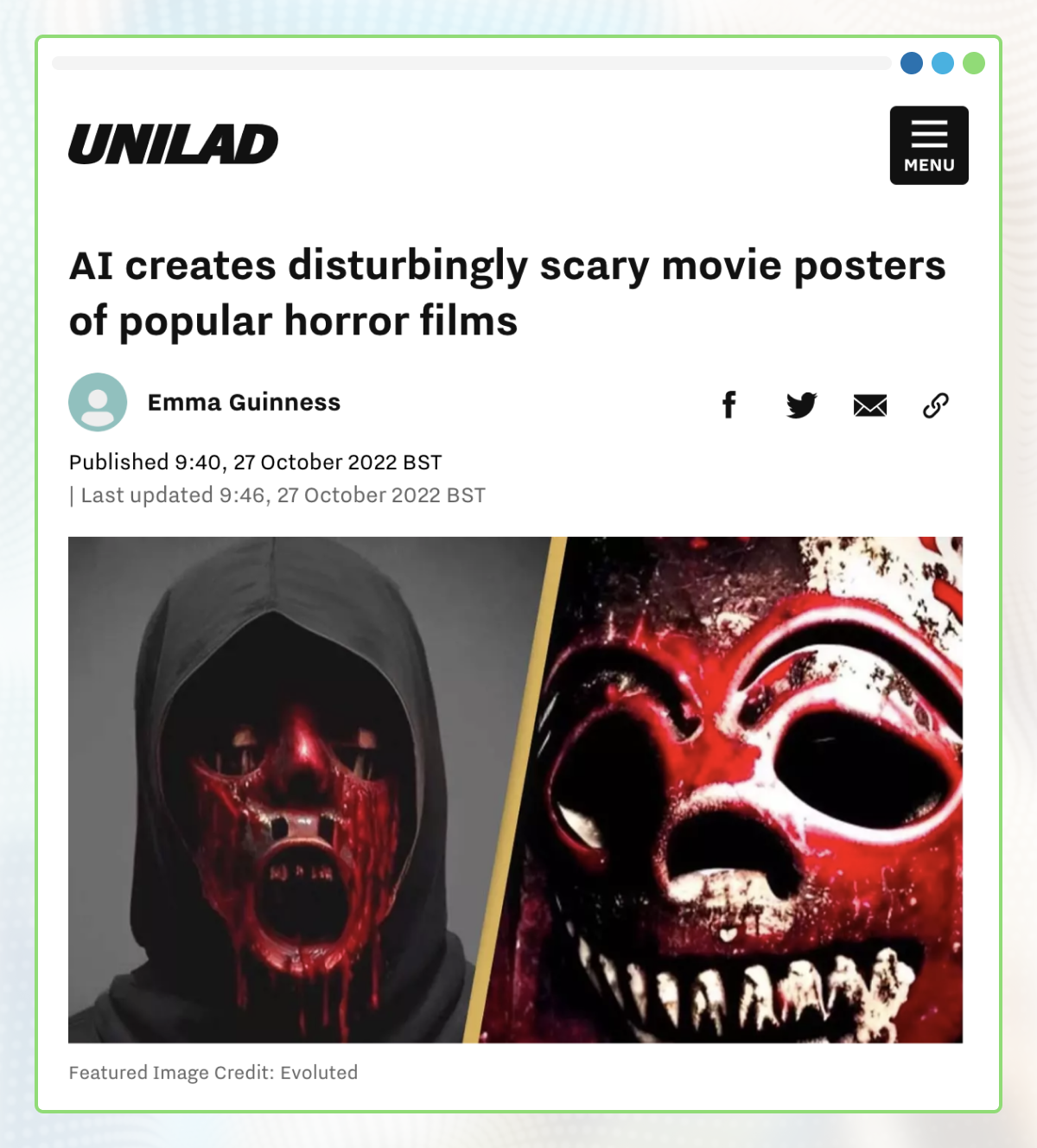
AI generated visual content tools such as Canva can automatically create visuals and graphics based on your input. Its ‘Text to Image’ function generates images based on your natural text prompts. You just need to describe the image you want to see, and Canva will attempt to create it. This gives you as a PR, the ability to create professional-looking visuals really quickly, without design expertise.
Some amazing ways to use this include generating images of products that don't even exist yet, mock up your own PR ideas without relying on designers and rapidly create completely unique images for your campaign.
Here’s a couple more example of AI imagery forming the basis of a PR campaign:
For ScrapCarComparison, Propellernet, used AI tool Midjourney to imagine what discontinued cars would look like if they were re-released again in the future as electric vehicles. The result was a set of beautiful images that made headlines in the automotive industry.
Great Green Wall also used Midjourney, and generated the ‘ideal’ beauty standard in each country. They created AI beauty pageant representatives in the style of the ‘Miss World’ pageant, using what the A.I. believed to be the beauty standard in each location.
Image analysis
Image and video analysis can reveal insights on a scale that humans manually couldn't recreate. AI tools such as Azure, can analyse piles of images into organised information.
For example, you could use it to identify emotions in images and create a campaign surrounding this. A House Fresh PR campaign by Neomam used Azure, and “analysed a database of Instagram selfies from every state and the 100 biggest U.S. cities to see which are the happiest places to live. This facial recognition tool places numerical estimates on emotions based on characteristics and expressions. To work out the happiest cities and states, we used the FaceAPI happiness score, averaging all the scores in each location.”.
For Petplan, Verve Search found out where the happiest pet owners live by also utilising Microsoft Azure’s Face API. They detected the levels of emotion present in photos of faces, and combined this with more AI data from SentiStrength, showing which type of pet owner talks about their animals the most positively online.
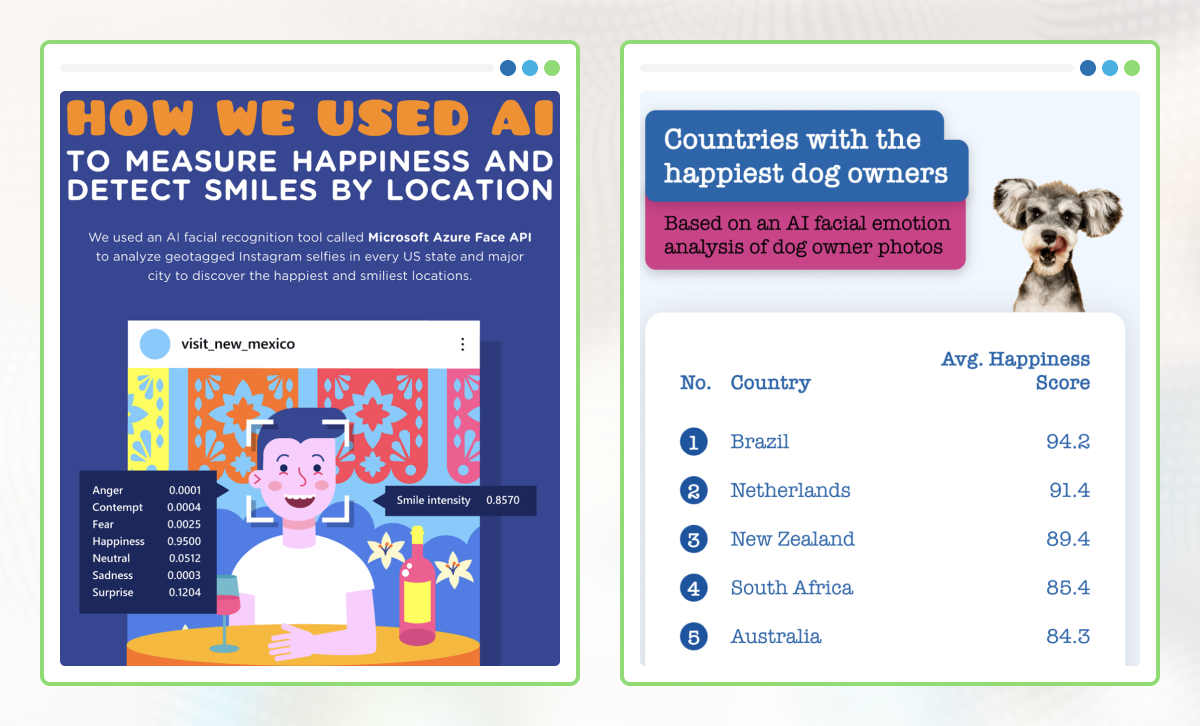
Sentiment analysis
Sentiment analysis tools can decipher moods and emotions of topics being talked about on social media. This is ideal for drawing insights to then create a PR campaign around.
For example, a PR campaign from Cleanipedia used this type of analysis, they utilised “TensiStrength, a system that measures the stress levels in social media text to analyse hundreds of thousands of cleaning-related tweets posted around the world”. This created newsworthy stats such as, 67% of tweets complaining about cleaning came from men, compared to 33% from women.
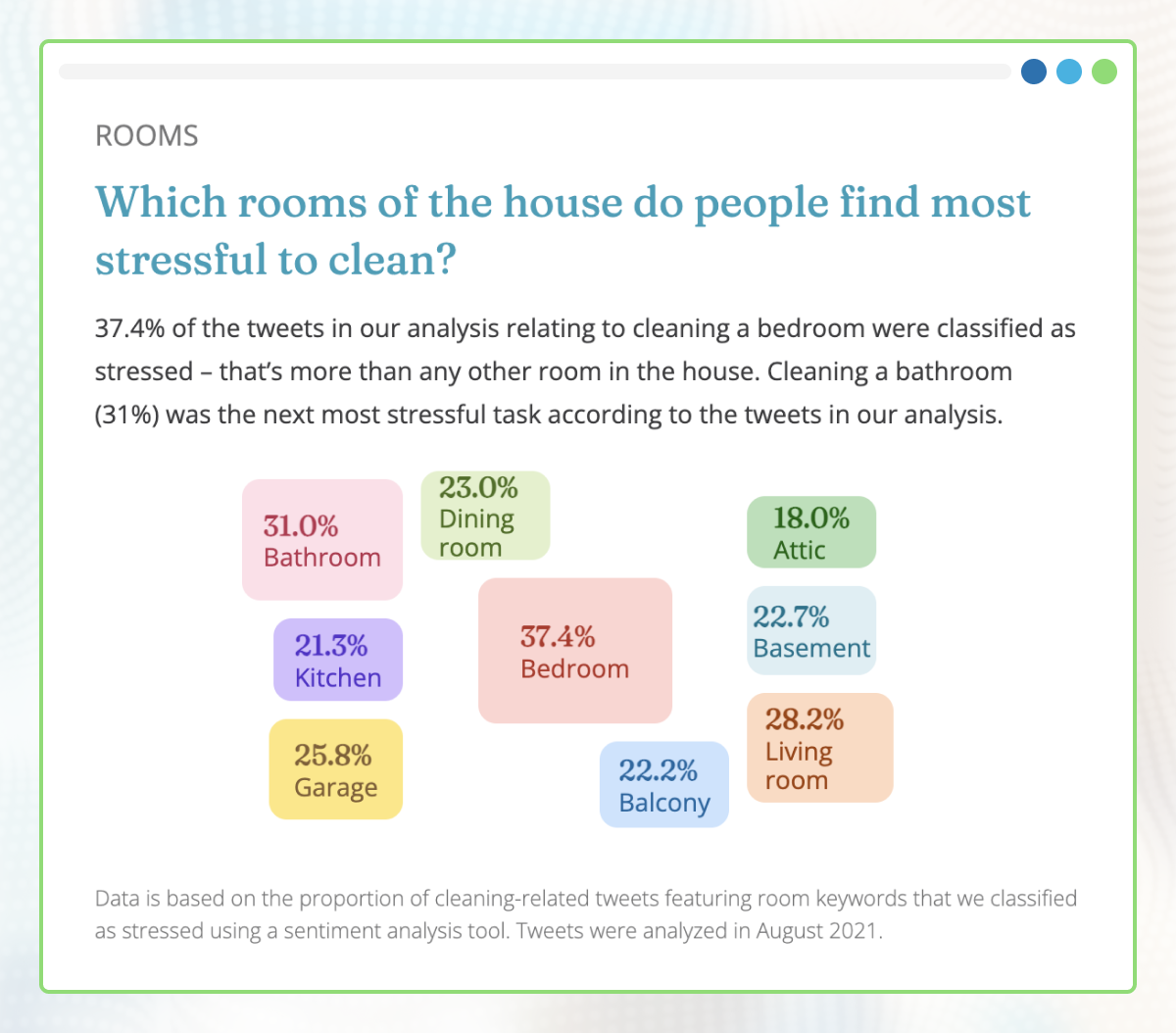
AI experiments
Running experiments using AI tools and sharing the results is another great example of how to create newsworthy campaigns.
For example, ASICS generated an AI campaign entitled “Changing the way AI sees exercise”. Their campaign says when you AI to portray someone that’s healthy and exercises, “You get images of people with minimal body fat, chiselled jaws, and muscles.AI has been taught that exercise is purely for physical transformations. This is feeding into unrealistic body standards and damaging our mental wellbeing…and it has learnt this from us.”. They then launched an AI Training Programme to teach AI tools that the power of exercise is much more than physical gain, the public can even submit their own images into the experiment.
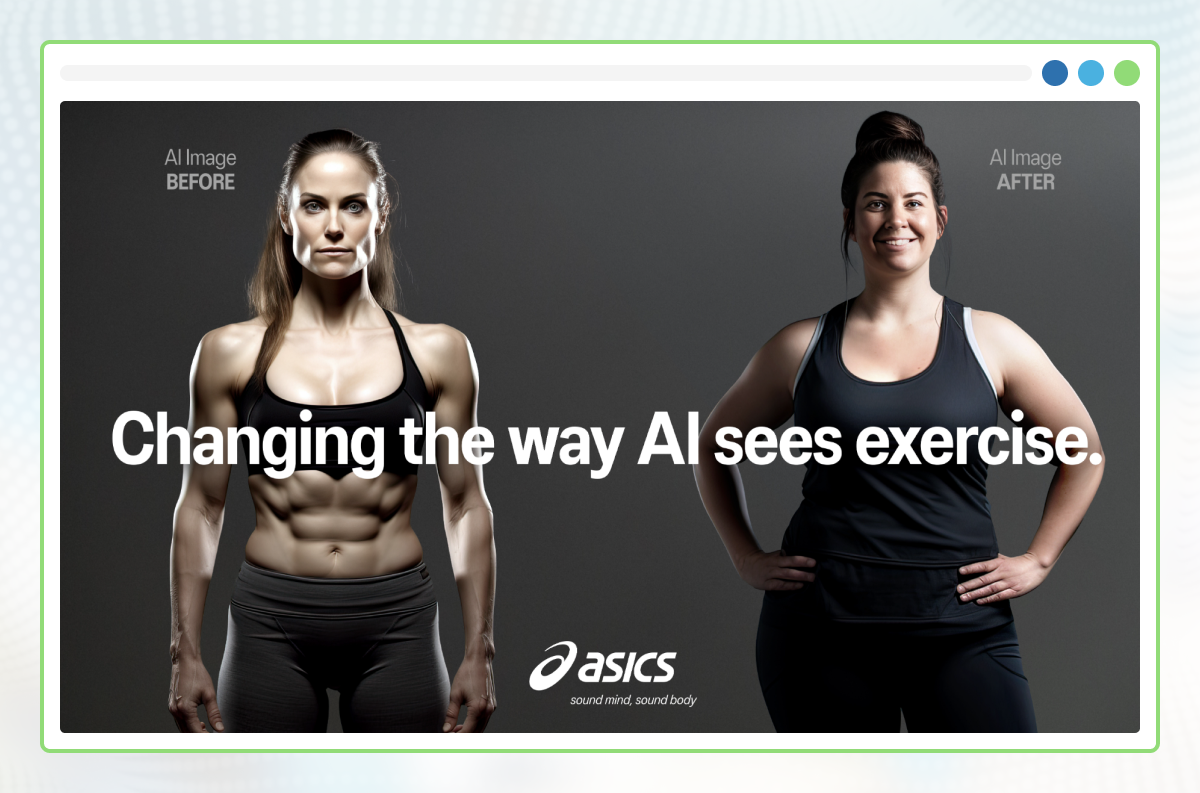
By incorporating AI tools into PR strategies, you can save time, gain valuable insights, and deliver more personalised and impactful campaigns.
Addressing ethics, privacy and security with AI in Digital PR
While AI is one of the most significant technology developments of the last few decades, it certainly comes with limitations and concerns.
Transparency
As PRs, we should strive to be transparent with where AI has been used, how it was integrated into the PR campaign and end users should always know if they are interacting with something that uses AI.
Mitigating bias
Inherently, AI systems can have biases from their training data. It's crucial to regularly evaluate the responses from AI and mitigate any biases to ensure that all of the outcomes are fair and inclusive.
AI should only enhance your work as a PR and certainly not replace it. While AI can automate many tasks, human assessment of the output is essential to prevent critical decisions from being made solely by AI algorithms. As such a new concept, there can be a lot of output issues, so we’d recommend always checking and double checking images, text and every part of information that’s generated for you.
Data protection
If you use your data in AI systems, this should still follow your existing data protection measures, and data anonymisation, to safeguard your user’s privacy.
Conclusion
AI is the most prolific new tool accessible for us as PRs, we can use it to improve our tasks and steer campaigns, but it’s important that this is used ethically and never replaces human input.
As AI develops and improves, there’s exciting opportunities for innovation in the PR agencies. It’s vital that we all stay at the forefront of AI advancements to drive overall industry success.





